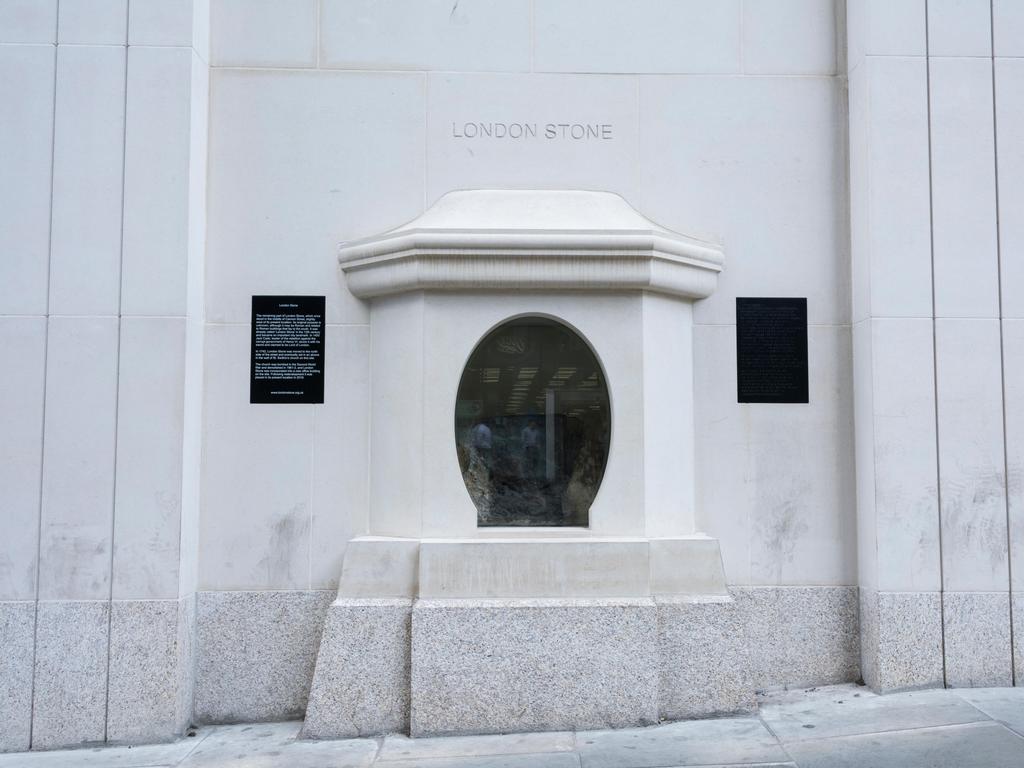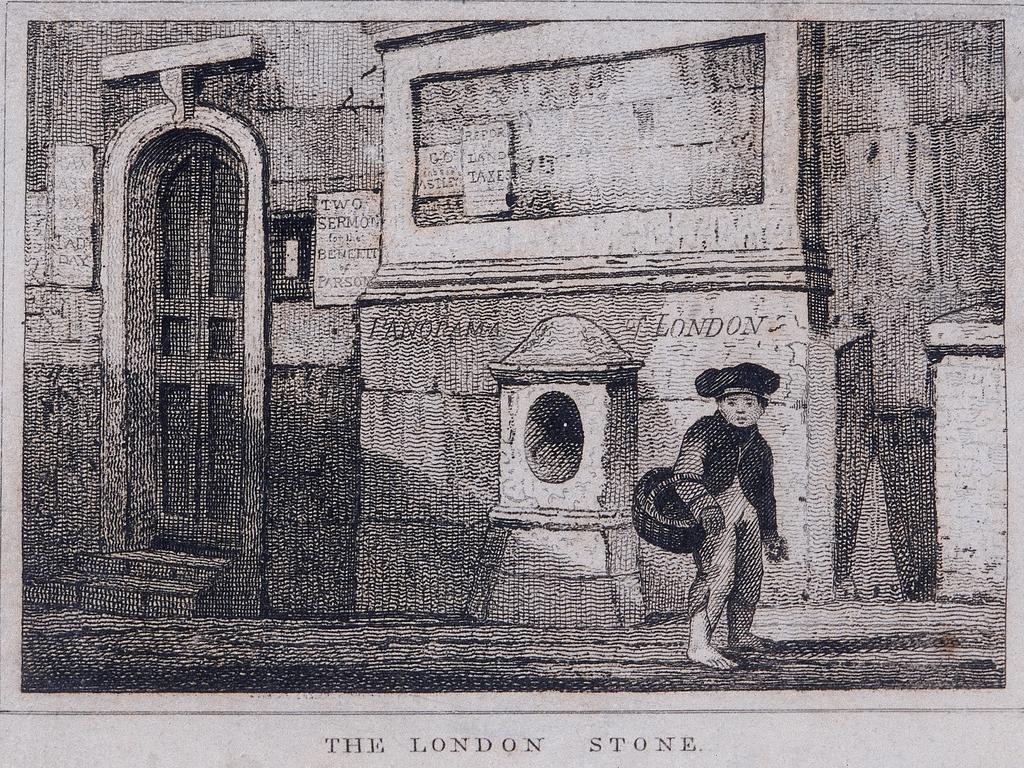Mysterious centuries-old London Stone that ‘protects the capital from destruction’ baffles scientists
An artefact housed in a small crypt in London is said to have mystical powers. Yet scientists have no idea where it came from.
A cryptic stone shrouded in mystery is one of London’s oldest artefacts — yet scientists have no idea where it came from.
The London Stone is housed in a small crypt built into a wall on Cannon Street, in London and has been there since at least the 16th Century.

Legend has it that the modest lump of limestone has magical properties, and that if removed from the London, the city will fall.
Buildings have risen and fallen around it over the centuries, and scientists say it may have been sitting on Cannon Street since the Romans ruled Britain.
“It’s always there, and always remains the same,” Roy Stephenson, an expert at the Museum of London, told the BBC.
“It has stood roughly in the same spot, while everything around it has changed.”

To this day, the origin of the stone — which measures 53cm by 43cm by 30cm — remains unknown.
Some experts believe the antique was placed there by Brutus of Troy, the legendary founder of Britain, with the saying: “So long as the stone of Brutus is safe, so long shall London flourish.”
Another theory is it was left there by the Romans during their occupation of Britain from 54BC to 410AD.
The 76-kilo rock could have been used by our invaders either as part of a monument or milestone.
Studies suggest the stone was dug up in Devon, or perhaps the Cotswolds, but no one knows for sure.
“Science just can’t explain it — this is one case where archaeology has failed,” John Clark, curator emeritus at the Museum of London, told the BBC.
Whatever its origin, it’s been a part of London for centuries, and features in the very first map of the city drawn up in the 16th Century.
The stone even features in work by famous writers, including Shakespeare in Henry VI Part 2.
In the play, the Kentish rebel Jack Cade uses the stone as a throne.
Its elusive history has led to several conspiracy theories, with some suggesting the rock is the stone from which King Arthur pulled the sword to reveal that he was rightful king.
Others claim that, like the palladium that protected the city of Troy in Ancient Greek mythology, the stone must survive or London will fall.
London Stone has moved around several times over the past 200 years.
In the 18th Century, it was deemed to be blocking the road and so was moved to an alcove of the nearby St Swithin’s Church.
The building was pummelled by German bombs during the Blitz, and after the demolition of its ruins in 1960 the stone was briefly moved to the Guildhall Museum.
In 1962, it was placed into a glazed and grilled crypt in a building which has been the Bank of China, a sports shop and a WH Smith.
It has remained there ever since, and scientists continue to study it in the hopes of discovering its elusive origin.
This article originally appeared on The Sun and was reproduced with permission



